Suggestion on brewing wind-stained coffee in Asian coffee-growing countries in India & the production of wind-stained coffee
Professional coffee knowledge exchange more coffee bean information please follow the coffee workshop (Wechat official account cafe_style)
When it comes to ancient coffee varieties, Ethiopian native varieties and Yemeni mocha are well deserved. In fact, India also began to grow coffee in the 16th and 17th centuries, which can be regarded as the third oldest coffee variety, but because the genetic polymorphism of coffee grown in India was no longer seen at that time, botanists did not include Indian coffee as an ancient variety.
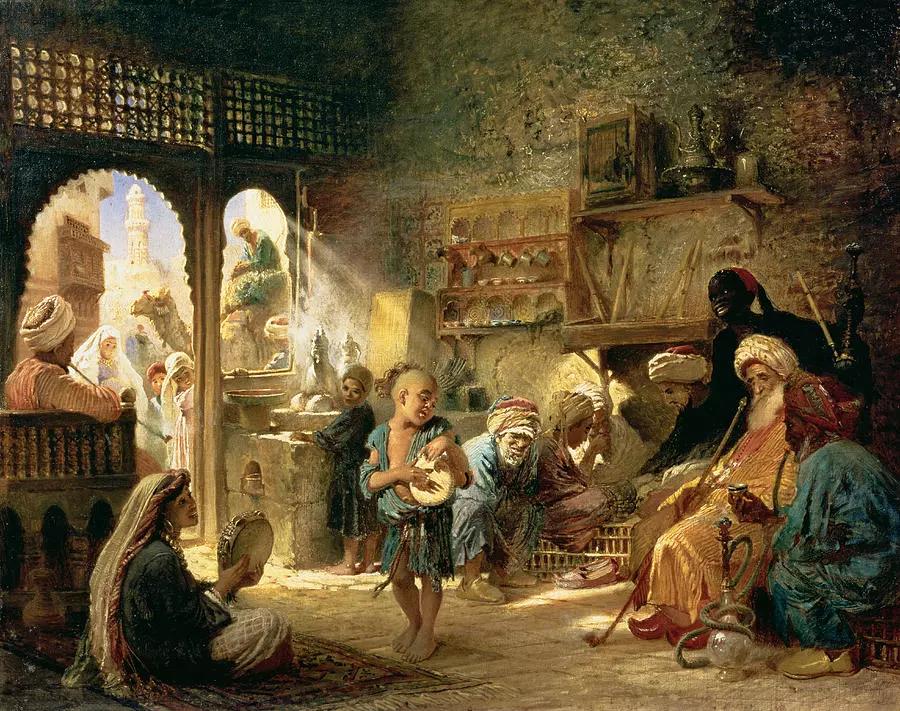
Coffee cultivation: the border between the old and the new
Legend has it that Indian coffee was made in 1600 by Muslim Sufi saints from India on a pilgrimage to Mecca and stole seven coffee seeds through Yemen on his way home and began to grow coffee in southwestern India. However, according to the literature, coffee was only introduced into India in 1695, and although there are differences in the timeline, it is proved that coffee cultivation in India began in the 17th century at the latest. Coffee from Ethiopia and Yemen in the "Old World" was transplanted to Central and South America and Indonesia in the "New World" in the 18th century, and coffee cultivation in India happened to be at the junction of the new world and the old world.
Without the existence of Indian coffee, India transplanted the Indonesian island of Java to grow coffee, and there was no upsurge of growing coffee in the new world in the 18th century.
Geography and climate of India
India is located on the Indian peninsula of the South Asian subcontinent, with a coastline of 6083 kilometers. The topography is dominated by plains, plateaus and gentle hills, accounting for about 60% of the land area. Roughly divided into the northern mountains, the central plain and the southern plateau three topographic areas, the northern mountains belong to the Himalayan system, high and steep mountains, more than 7000 meters of peaks, the central Indus River. The Ganges Plain is one of the world's famous great plains; the southern Deccan Plateau is mostly between 300 and 800 meters above sea level.
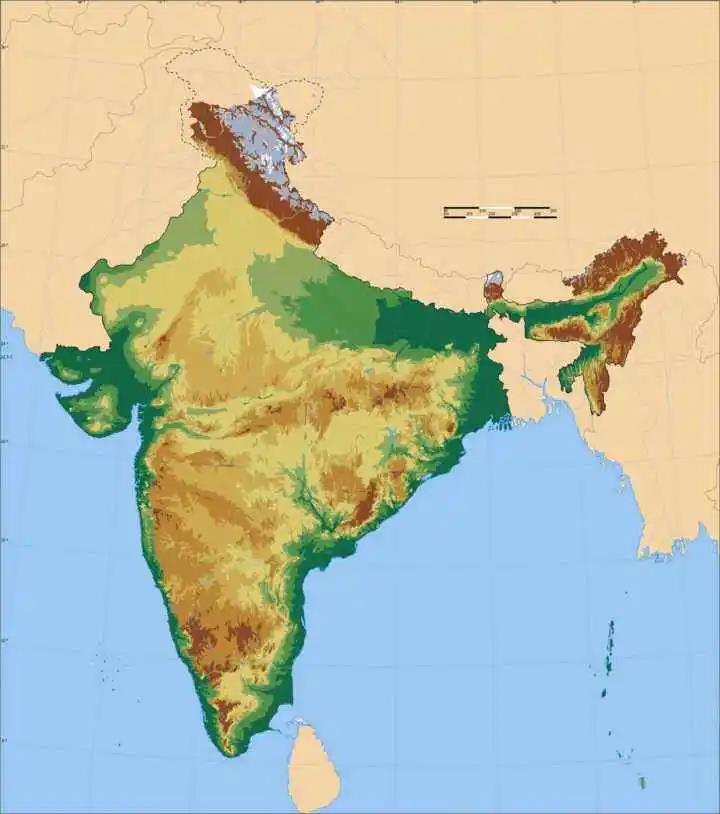
There are narrow alluvial plains along the coast. The northwest is an Indian desert dominated by sandy deserts. Important rivers include the Ganges, Brahmaputra, Narmada, Godavari, Krishna and so on. The amount of water in the river is large, and the seasonal change is obvious. Most areas have a tropical monsoon climate, with high temperatures and distinct dry and rainy seasons. The northwest has a mountain climate, the Indus Plain has a subtropical steppe and desert climate, and the southwest has a tropical rain forest climate.
Indian coffee varieties
The main coffee producing areas in India are located in Karnataka province in the southwest, growing Arabica and Robusta, and Clara province in the southwest, mainly growing robusta coffee beans. " The flavor of Old World Indian coffee beans is notoriously wild, which makes India the first country to improve coffee varieties. Kent, a horticulturist, screened out a drought-resistant and leaf rust-resistant variety of iron pickup from the coffee garden in India from 1918 to 1920, and introduced it to the country of production in the new century. In addition to Kent, India has also developed more alternative coffee, but the coffee flavor is still wild.
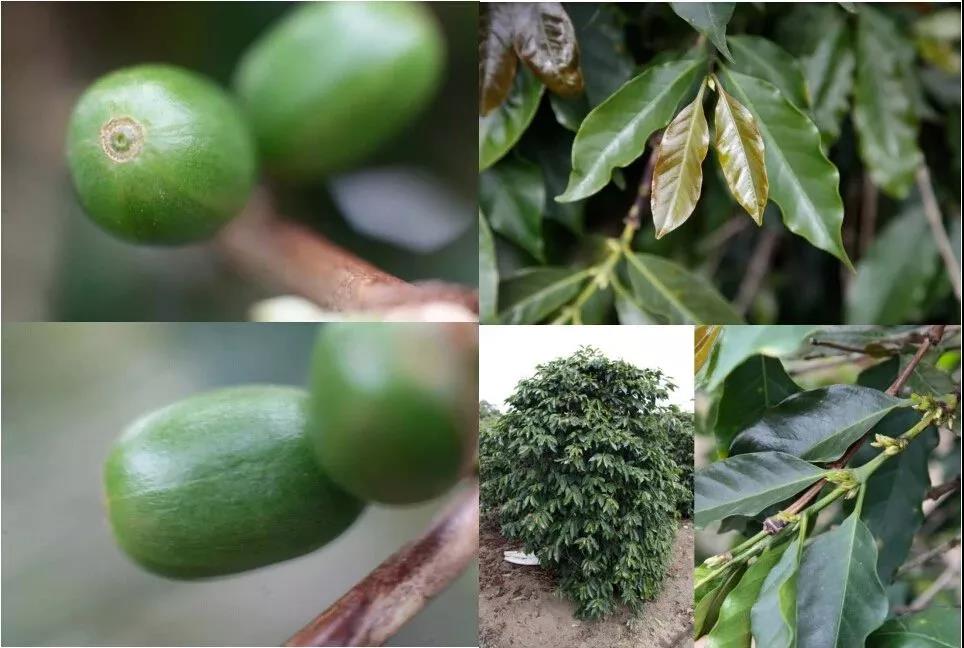
Sln288: a hybrid of Indian Arabica beans and Rabirika beans that is resistant to leaf rust and has a slightly wild flavor similar to Arabica beans.
The hybrid of Sln795:SLN288 and Kent, without the bad taste of Labrika beans, has a more elegant flavor and stronger disease resistance than SLN288. It is now the main coffee growing variety in India.
Sln9: a low-grade variety carefully crafted in India, with a cross between the Ethiopian wild variety Tafarikela and Timo, with high yield and excellent disease resistance, with beans with a slightly Rosa coffee flavor.
Sln12: Kaddura and Timo hybrid, referred to as India Katim, wild flavor, high disease resistance, high yield.
Sln:274: small Robusta beans, wheat tea flavor, sweet, peanut and nutty aromas, is the imperial level in the Robusta.
SlnC x R: hybrid of Congolese Sisi and Robusta, Indian spices, slightly fruity aromas and acidity, mainly used for blending espresso beans.
It has been mentioned above that the flavor of Indian coffee is wild, and Qianjie can't help exploring this mysterious coffee flavor, specially buying Indian monsoon coffee beans treated by the second monsoon, adding wind-stained coffee, and then roasting, cup testing, brewing and other series of exploration.
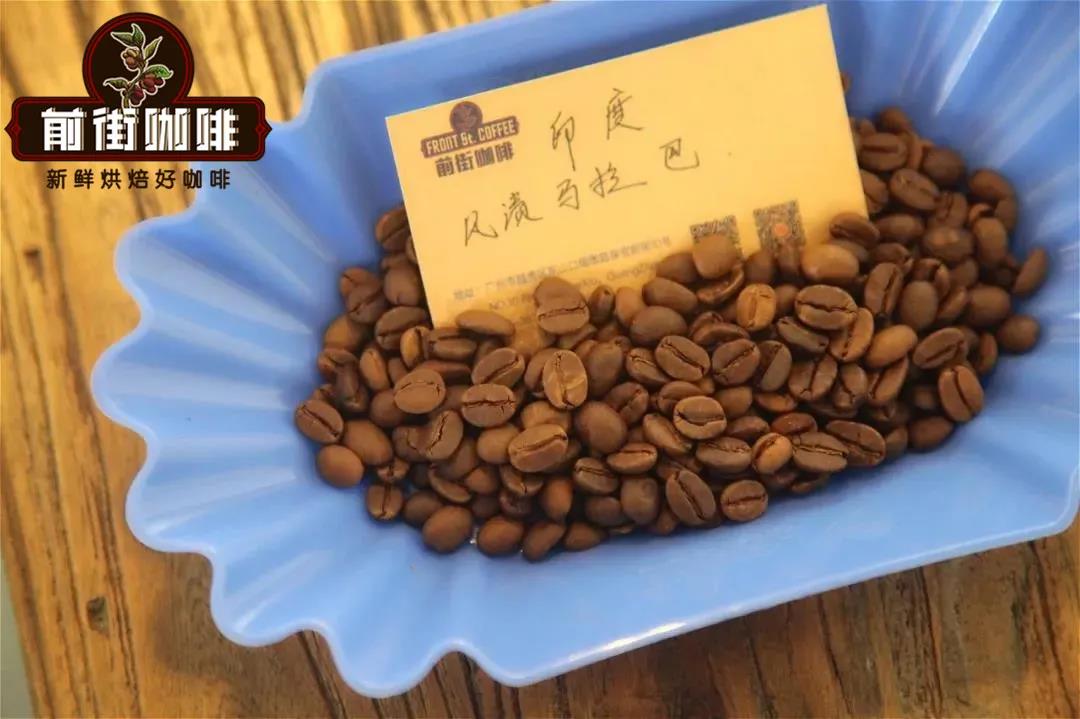
Producing area: the coast of Malaba in southern India
Altitude: 1100-1200 m
Variety: Kent, Sln795, Katim, sln 9
Treatment method: monsoon / wind stain solarization treatment
The origin of monsoon / wind stain treatment
In the 17th and 18th centuries, India shipped coffee beans to Europe by sailboat, which took six months. The raw beans were placed on the bottom of the barn and absorbed the moisture and salty taste of the sea. The raw beans arrived in Europe and had deteriorated. The color changed from dark green to the yellowish brown of rice. The acidity of the coffee almost disappeared, but it unexpectedly developed a strong nutty and cereal flavor. It tasted full, with a bit of black rice tea flavor. Strange things will always be liked by some people, and Nordic people like this kind of golden alternative coffee very much. In 1869, the opening of the Suez Canal and the advent of steamships shortened India's voyage to Europe, but customers began to complain that Indian coffee was "stale", losing its charming yellow and nutty flavor, and orders plummeted. Indian exporters began to study the solution.

How to complete the modern monsoon / wind stain treatment?
In May and June every year, the monsoon phenomenon occurs in southwestern India. Wind-stained coffee needs to be made with sun-cured beans. Coffee farmers bask the beans flat in the wind-stained factory, which is about 12-20 cm thick, and place them for five days. Rake these coffee beans again and again, so that all the coffee beans are exposed to the extremely humid air at that time, and then put the beans loosely in a bag and pile them up. So that the monsoon can blow through the bag. The wind-stained plant faces to the west and the salty monsoon blows from the southwest. Coffee beans are laid flat in the wind field, the windows are all open, and the monsoon humidity blowing from the Arabian coast in summer is very high, and the wind stains return to the bag to a certain extent, but the coffee beans should not be too full, and the coffee bags should not be piled too dense so as not to be airtight and moldy. There these bags are restocked once a week for a total of 7 weeks, until the coffee beans change color and taste. Also from time to time to pour out coffee beans to replace sacks to avoid breeding mold, which is quite time-consuming and labor-consuming.
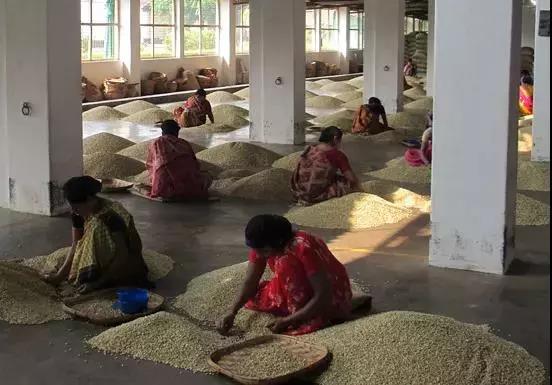
The weathering period is about 12 to 16 weeks, and after it is ripe, it has to be fumigated to drive out the weevil, and finally the beans are screened manually to pick out the failed beans that have not turned golden. Since June, after three to four months of wind stains, the volume of green coffee beans has doubled to double, the color has changed from green to golden yellow, the weight and density have decreased, the moisture content is about 13%, and the acidity of beans has also been reduced, resulting in significant changes in quality and quantity. Finally, the unwind-stained beans or other sundries and defective beans are screened again to remove those coffee beans that are not affected by the "monsoon", and then prepare for cup testing, grading, bagging, export, and so on. October to February of the following year is a good time to make "monsoon" coffee.
Qianjie thinks that the flavor of monsoon coffee is like mugi-cha, the main tone is the taste of grain, with Weiwei fruit acid. If this taste occurs in other coffee, it may be considered defective, but it is most normal to appear in monsoon coffee.
Analysis of Qianjie raw bean
Monsoon coffee raw beans pale / yellowish white, general bean density, Qianjie coffee decided to roast medium firepower and then steadily climb, turn yellow point in 4 minutes 50 seconds or so, and then reduce firepower to open the throttle into the Mena reaction, when an explosion, open the throttle, maintain firepower, the temperature is about 184.4 ℃, 2 minutes 30 seconds after an explosion under the beans.
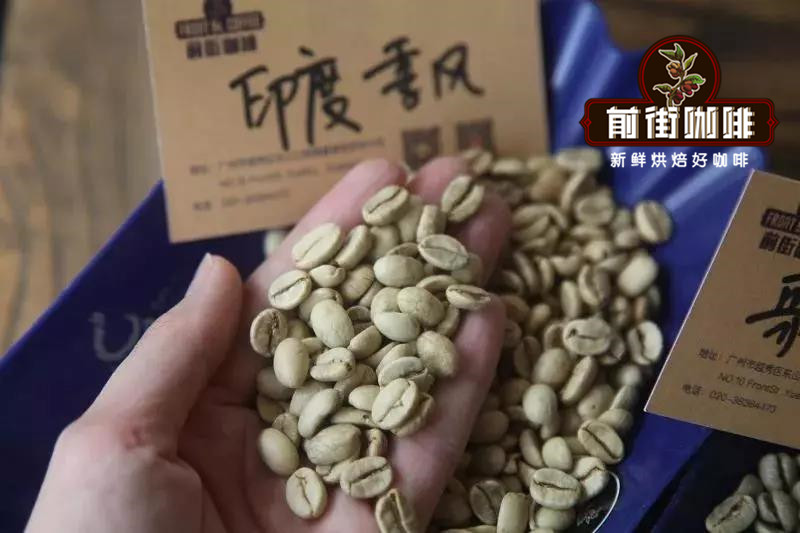
Qianjie baking suggestion
Roaster: Yang family 600g semi-direct fire
The furnace temperature is preheated to 200 degrees Celsius, the throttle is opened at 3jing30s and fired, the firepower is adjusted to 160, the temperature recovery point is 1: 25 ", the firepower is maintained, 4: 50" turns yellow, the smell of grass disappears, enters the dehydration stage, the firepower is lowered to 140, the throttle is opened to 4, and the firepower is reduced to 110 again at 168 degrees.
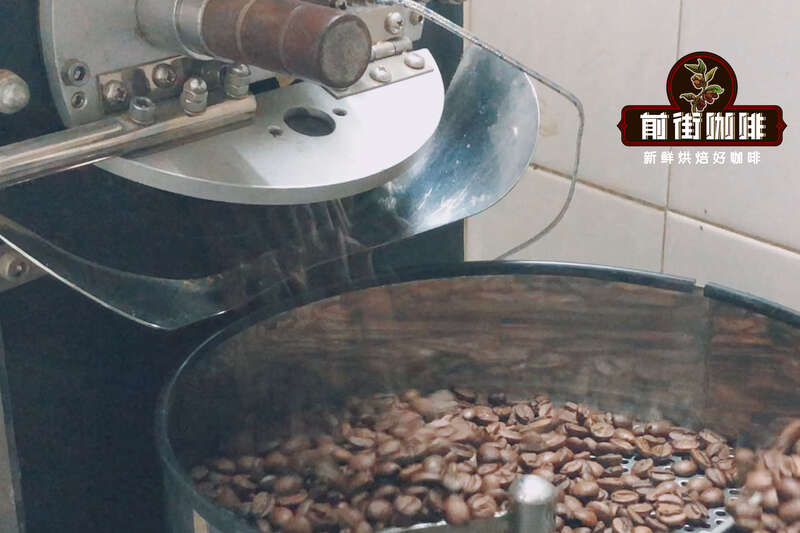
After 8 minutes of dehydration, there are wrinkles and black markings on the bean surface, and the smell of toast changes to coffee, which is a prelude to an explosion, when the firepower remains the same, the throttle opens to 5, and listen to the sound of an explosion. When it starts to explode at 8: 55 ", all the throttle doors are open." The development time after an explosion is 2 minutes and 30 seconds to 197.8 ℃.
Qianjie Cup test report
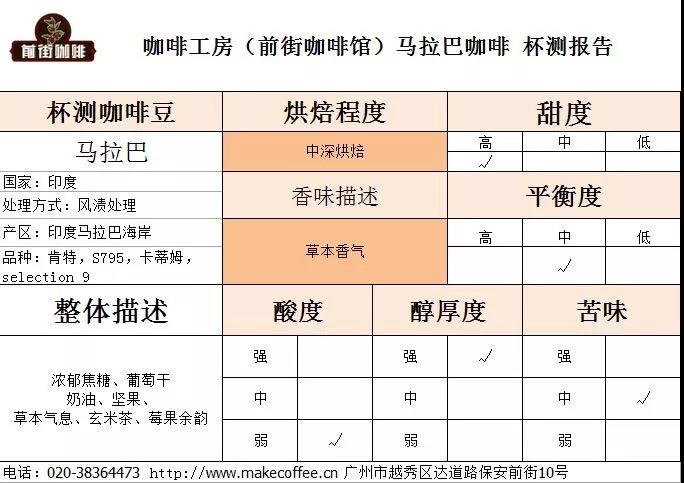
The suggestion of cooking in Qianjie
For deeply roasted coffee beans, in order to highlight the mellow feeling of coffee, Qianjie coffee will choose Kono filter cup to brew. The characteristic of Kono filter cup is that it has the function of soaking, which can be used to extract more coffee substances and enhance the mellow taste. The Kono filter cup has few ribs and is located at the low end, which can make the filter paper stick to the filter cup to limit the air flow, so as to slow down the water flow speed and increase the contact time of water powder.
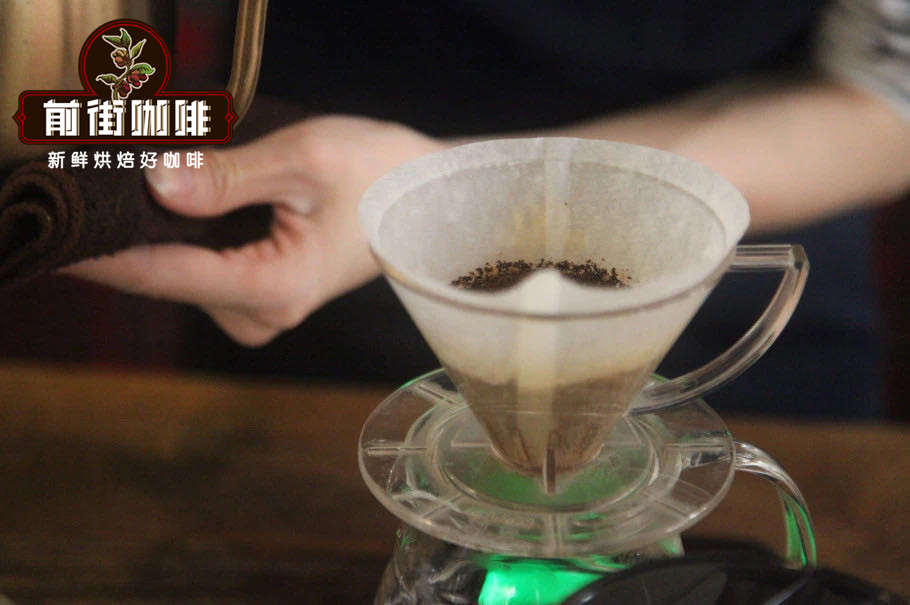
Water temperature: 88-89 degrees
Proportion: 1:15
Degree of grinding: medium coarse grinding / coarse sugar size (screening rate of No. 20 screen 70-75%)
Qianjie three-stage cooking technique: the first section is injected with 30 grams of water for 30 seconds, then 95 grams (about 125 grams shown by the electronic scale) is injected, and the injection is completed in about 1 minute. When the water level drops to 2 grams in the powder layer, the remaining 100 grams (about 225 grams shown by the electronic scale) are injected in about 1 minute and 40 seconds. 2 minutes-2 minutes 10 seconds drip filtration is completed, remove the filter cup, complete the extraction.
Flavor description: rich aromas of caramel, raisins and herbs, with a berry finish and a taste like Xuanmi tea.
For more boutique coffee beans, please add private Qianjie coffee on Wechat. WeChat account: kaixinguoguo0925
Important Notice :
前街咖啡 FrontStreet Coffee has moved to new addredd:
FrontStreet Coffee Address: 315,Donghua East Road,GuangZhou
Tel:020 38364473
- Prev
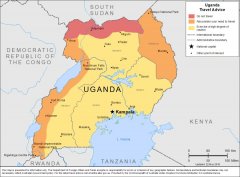
African Coffee Uganda Coffee production area Uganda Coffee treatment & hand-made Ugandan coffee flavor
Professional coffee knowledge exchange more coffee bean information please follow coffee workshop (Wechat official account cafe_style) Ugandan coffee is almost unheard of in the boutique coffee industry. This country has always been dominated by the cultivation of Robusta. In recent years, with the vigorous development of coffee production, Uganda has also begun to grow Arabica coffee beans, and the local government has also set up to manage coffee cultivation.
- Next

Why does coffee still cost 1 euro in Italy? Why is espresso popular?
According to some reports, espresso (after water) is the second largest consumer drink in Italy. Millions of cups of espresso are drunk every day across the country. In early 2020, the consortium protecting traditional espresso even submitted a UNESCO application to protect the Italian roots and characteristics of espresso. But despite inflation (1 euro in 2000)
Related
- Beginners will see the "Coffee pull flower" guide!
- What is the difference between ice blog purified milk and ordinary milk coffee?
- Why is the Philippines the largest producer of crops in Liberia?
- For coffee extraction, should the fine powder be retained?
- How does extracted espresso fill pressed powder? How much strength does it take to press the powder?
- How to make jasmine cold extract coffee? Is the jasmine + latte good?
- Will this little toy really make the coffee taste better? How does Lily Drip affect coffee extraction?
- Will the action of slapping the filter cup also affect coffee extraction?
- What's the difference between powder-to-water ratio and powder-to-liquid ratio?
- What is the Ethiopian local species? What does it have to do with Heirloom native species?

